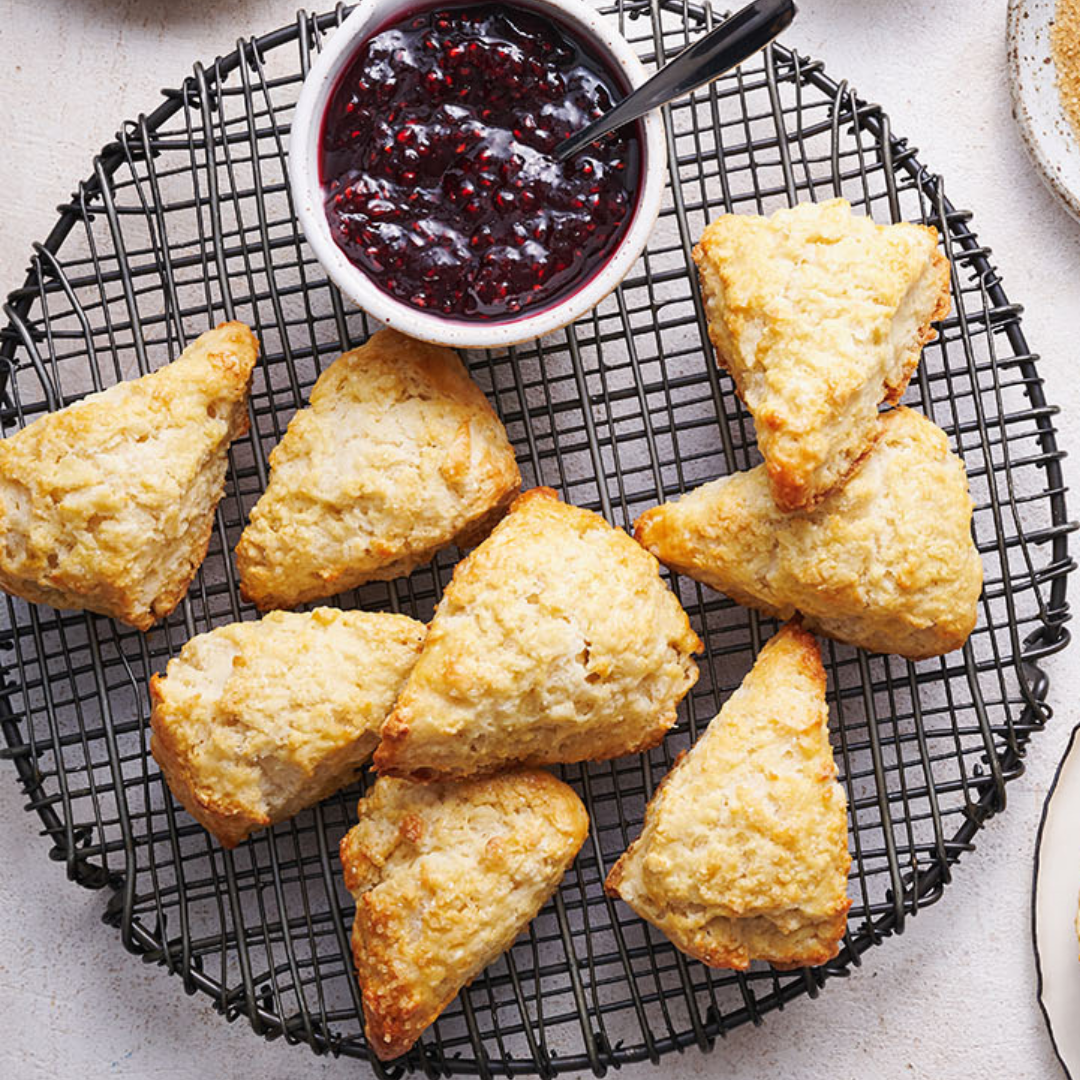
Image Source: Google
There’s something special about the process of baking scones at home. The delightful aroma that fills the kitchen, the warm comfort of a freshly baked treat, and the satisfaction of creating something delicious from scratch. But let’s face it, sometimes we don’t have the time or energy to gather all the ingredients and measure them out precisely.
That’s where baking mix comes in handy, allowing us to whip up a batch of scones with minimal effort and maximum flavor. From oven to table, making perfect scones with baking mix is a breeze.
One of the key benefits of using a baking mix for scones is the convenience it offers. With a pre-mixed combination of flour, leavening agents, and other dry ingredients, you can skip the step of measuring out each component separately. This not only saves time but also reduces the risk of making errors in the mixing process. Simply follow the instructions on the package, add any additional ingredients such as butter or milk, and you’re well on your way to delicious scones in no time.
When it comes to making perfect scones, the quality of the baking mix you choose plays a crucial role. Look for a mix that is made with high-quality ingredients and minimal additives. This will ensure that your scones have a rich flavor and tender texture, without any artificial aftertaste. Additionally, consider opting for a baking mix that offers a variety of flavors to choose from, such as traditional buttermilk, cranberry orange, or chocolate chip, to keep things interesting and cater to different preferences.
Another tip for making perfect scones with baking mix is to handle the dough gently and avoid overmixing. Scones are meant to be tender and flaky, not tough and dense. To achieve the desired texture, use a light hand when incorporating the wet ingredients into the dry mix. Mix just until the dough comes together, being careful not to overwork it. This will help to prevent the formation of gluten strands, which can toughen the scones and make them less enjoyable to eat.
Once you have mixed the dough, it’s time to shape and bake the scones. One popular method is to pat the dough into a circle and cut it into wedges, giving the scones their signature shape. Alternatively, you can use a round cutter to create individual scones for a more uniform look. Regardless of the method you choose, be sure to place the scones on a parchment-lined baking sheet to prevent sticking and ensure even baking.
Before placing the scones in the oven, you can brush the tops with a bit of milk or egg wash to help them achieve a golden brown color as they bake. This step is optional but can add a nice finishing touch to your scones. Once in the oven, be sure to keep a close eye on them to avoid overbaking. Scones are best when they are just lightly golden on the outside and tender on the inside, so be sure to test for doneness with a toothpick or cake tester before removing them from the oven.
Finally, when the scones are baked to perfection, it’s time to enjoy them fresh from the oven. Whether you prefer to serve them warm with a dollop of clotted cream and jam, or simply enjoy them on their own, scones make for a delightful treat any time of day. From breakfast to afternoon tea, scones are versatile baked goods that can be enjoyed in a variety of ways.